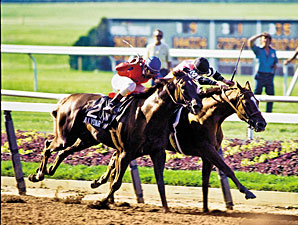By Tim Capps
 With the 2010 Triple Crown now in the record books, it is time for the annual
wailing and gnashing of teeth that always follows or starts happening during the
five weeks of Triple Crown hoopla.
With the 2010 Triple Crown now in the record books, it is time for the annual
wailing and gnashing of teeth that always follows or starts happening during the
five weeks of Triple Crown hoopla.
This year’s wailing has been predictable: The races are too close together;
it’s too early in the season for 3-year-olds who, in some instances aren’t yet
3, to be exposed to such rigor; and—saddest of all—the distances of the races
need to be altered because the American Thoroughbred of today is no longer up to
running a mile and a half, maybe even a mile and a quarter.
The fact we haven’t had a Triple Crown winner since Affirmed in 1978 does not
suggest the event is in need of a major overhaul.
It is wise to note that eight of the 11 Triple Crown winners did so while
competing against much smaller foal crops than did Secretariat, Seattle Slew,
and Affirmed, which speaks volumes about those three.
Zev, in 1923, became the first horse to run in all three “Triple” races and
win two of them. Since that time, 41 horses have run in all three and won two of
them. Of those, 21 captured the Kentucky Derby and Preakness Stakes, and 19 lost
in the Belmont (Derby/Preakness winners Burgoo King and Bold Venture did not run
in the Belmont due to injury).
Our only suggestion—and it won’t happen—is to limit the Derby field to 14
starters, which would make the Derby less of a “who’s luckiest” contest. Of
greater concern is what is happening off the track.
A major issue with the Triple Crown is that the three host tracks are all
going in different directions economically, and certainly don’t have much of a
dialogue about the event.
Having the Derby and Preakness on NBC while the Belmont was on ABC for the
past five years was dysfunctional, and with those contracts having expired it
isn’t clear what happens next.
While the Triple Crown isn’t dead, it isn’t healthy, either. Don’t let the
failure to communicate destroy a great American sporting tradition.




